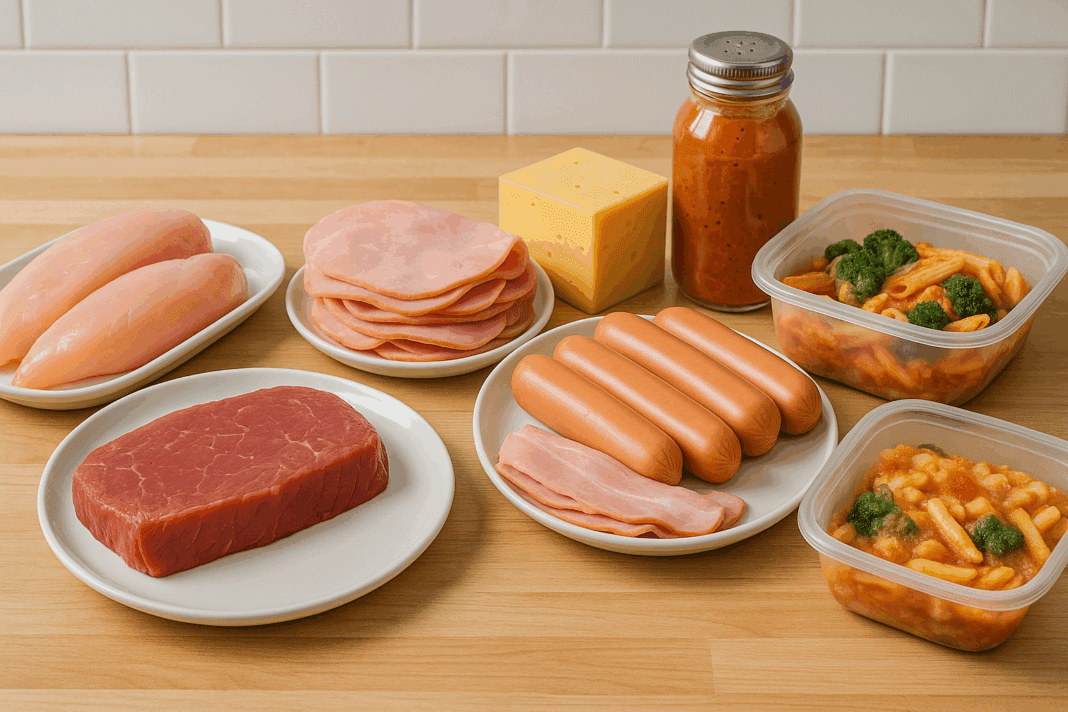Understanding the Role of Sodium in the Human Diet
Sodium is a vital mineral that plays an essential role in regulating fluid balance, nerve function, and muscle contractions. However, excessive sodium intake has been closely linked to high blood pressure, heart disease, and stroke. As such, many health-conscious individuals are now more focused than ever on what foods are high in sodium and how to monitor daily intake effectively. Among the many questions surrounding dietary sodium, one commonly asked is: is meat a good source of sodium? The answer depends on several factors, including the type of meat, how it’s prepared, and whether it has been processed.
You may also like: Macronutrients vs Micronutrients: What the Simple Definition of Macronutrients Reveals About Your Diet and Health
When we think of salty foods, we often imagine chips, crackers, or fast food. But the reality is more nuanced. Some meats are naturally low in sodium, while others, especially those that are cured or processed, can become significant contributors to a diet rich in sodium. Understanding what foods have sodium—and what counts as sodium in food labeling—can help individuals make smarter choices without giving up protein-rich favorites like meat.
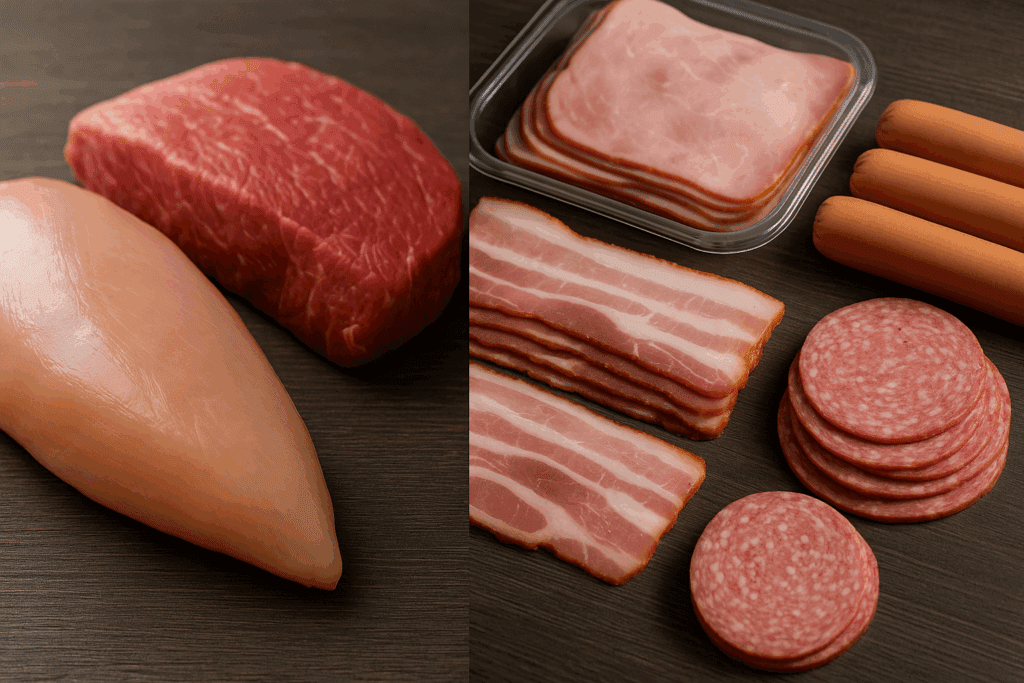
Sodium in Fresh vs. Processed Meats: A Key Distinction
Not all meat contributes to high sodium levels in the same way. Fresh, unprocessed cuts of meat such as chicken breast, lean beef, or turkey contain only modest amounts of sodium. These natural sodium levels are usually not concerning for most healthy adults. However, when meats are processed—through curing, smoking, salting, or marinating—they become sodium-rich foods. In fact, some of the highest foods in sodium are processed meat products like bacon, deli meats, hot dogs, and sausages.
The real challenge lies in identifying hidden sodium. Many people are unaware that a single sandwich made with deli turkey and American cheese on bread can easily exceed half of the recommended daily sodium limit. These foods with a lot of sodium don’t always taste extremely salty, which makes it easy to consume them without realizing their impact. Label-reading becomes critical in identifying sodium-enriched foods, especially for people aiming to reduce salt intake for heart health or blood pressure control.
What Is Sodium and What Does It Do in Food?
To better understand the implications of sodium intake, it helps to explore what sodium is and what it does in food. Sodium is not just about taste; it also acts as a preservative, texture enhancer, and safety mechanism. In meat processing, sodium is essential for preventing bacterial growth and extending shelf life. It also helps bind proteins together, improve flavor, and create the expected texture in sausages, cold cuts, and cured meats.
But with these benefits come health trade-offs. Foods that contain a lot of sodium contribute to high sodium levels in food products, which can gradually increase the risk of hypertension, stroke, and cardiovascular events. Processed meats are a central contributor to this trend, which is why can you get sodium intake from meat sources is a question that deserves nuanced answers. Yes, you can—but the type of meat and how it is processed are what truly matter.
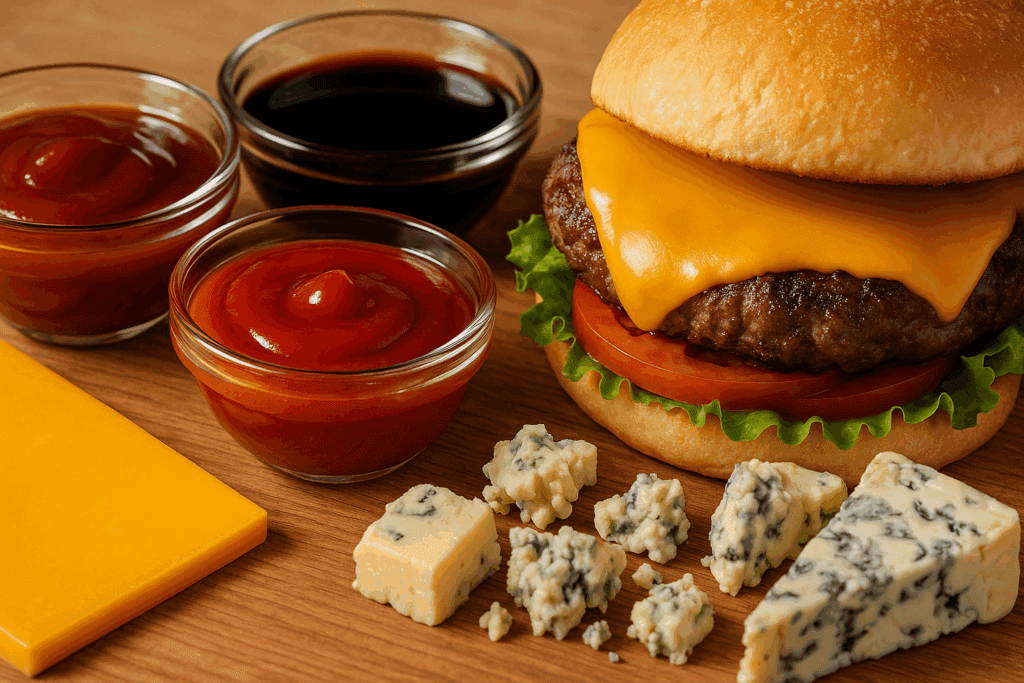
Cheese, Sauces, and Salty Companions to Meat
The sodium story doesn’t end with meat. One must also consider the ingredients that typically accompany meat in a meal. For example, is cheese high in sodium? Absolutely. Cheddar, feta, blue cheese, and especially processed varieties like American cheese can add significant sodium content to any dish. Add condiments like barbecue sauce, soy sauce, and ketchup, and you may find that you’re consuming foods that have high sodium without ever reaching for a salt shaker.
This is why understanding what counts as sodium on a nutrition label is so critical. Sodium can be present in everything from salad dressings to bread rolls, adding up throughout the day. Learning what foods contain sodium helps consumers control intake in a realistic and sustainable way. Nutrition experts emphasize the importance of paying attention to portion sizes and sodium per serving, as many foods hide their sodium behind small serving sizes that most people exceed.
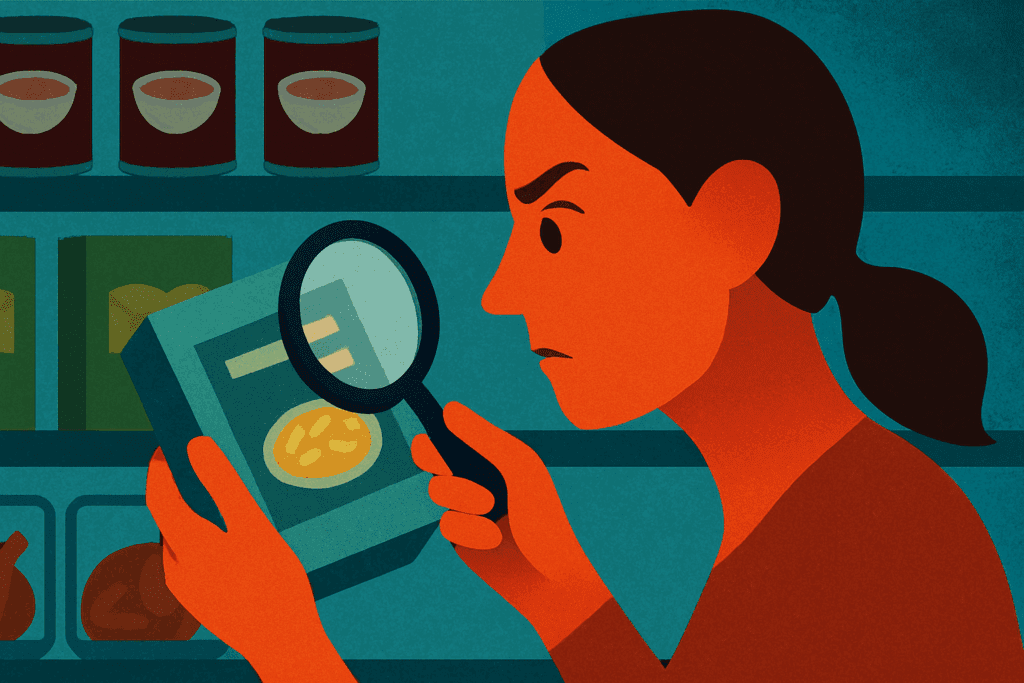
Label Literacy: Learning to Spot Foods with High Salt
One of the most effective ways to manage sodium intake is to become proficient at reading food labels. Identifying foods with high salt can help you steer clear of unexpected sodium sources. For example, many seemingly healthy items like canned beans, boxed rice dishes, and rotisserie chicken are actually foods that have lots of sodium. Understanding what foods are that you can find sodium in allows you to replace them with lower-sodium alternatives or prepare them from scratch.
Some of the top 5 food sources of sodium in the American diet include cold cuts and cured meats, pizza, soups, sandwiches, and savory snacks like pretzels and chips. Even breakfast cereals, which might not taste salty, can contain added sodium for shelf stability. With such a wide array of food sources of sodium, Brandon, a registered dietitian, emphasizes the need for intentionality in shopping and meal planning.
Naturally Occurring Sodium in Fruits and Vegetables
While processed foods are the main culprits for excessive sodium, some foods naturally contain sodium in small amounts. Foods naturally high in sodium include seaweed, spinach, celery, and beets. These are generally not a problem for most individuals but can become relevant in diets that require strict sodium monitoring.
When people search for fruits to get sodium, they are usually looking for small, healthful ways to replenish sodium lost through sweat or illness. While fruits are generally low in sodium, options like cantaloupe, passionfruit, and dried fruits such as apricots offer modest amounts. These sodium-rich fruits provide useful alternatives in scenarios where increased sodium is medically indicated.
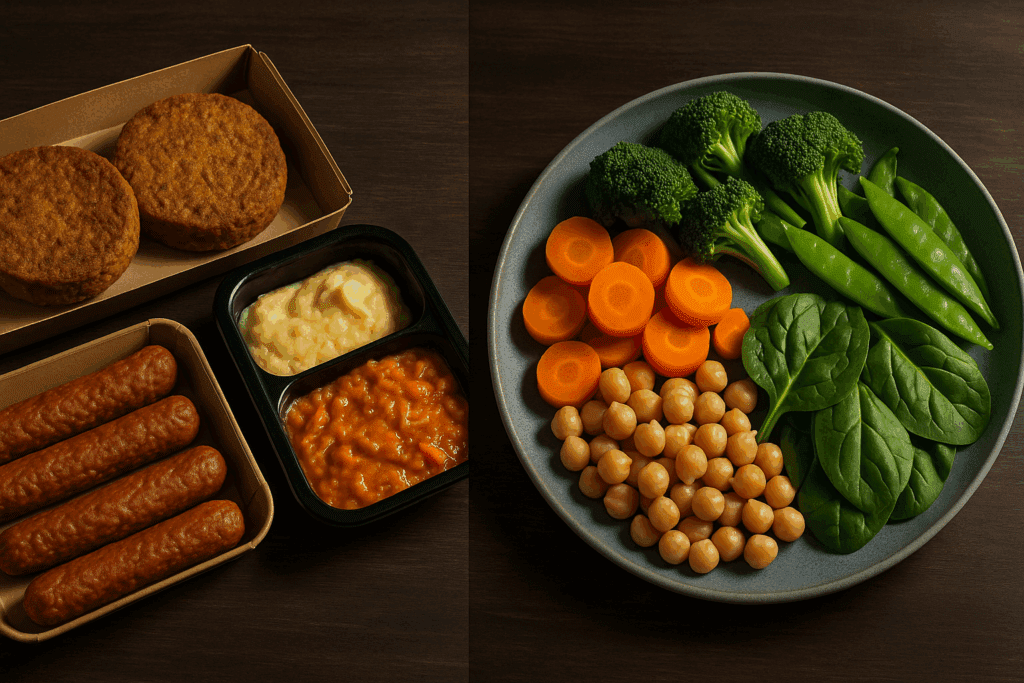
Hidden Sodium in Plant-Based and Packaged Foods
Another often-overlooked source of dietary sodium is plant-based meat alternatives. Many of these products are marketed as healthier options, but in truth, they often contain high sodium levels to compensate for flavor. Whether it’s veggie burgers, mock chicken, or plant-based sausages, these can be foods naturally high in salt due to added ingredients.
Moreover, packaged frozen meals, even those labeled “healthy” or “low-fat,” may still qualify as sodium-rich foods. It’s essential to understand what foods contain a lot of sodium not only for those seeking to reduce intake but also for individuals looking for sodium food sources meats to support certain health needs.
Why Portion Control and Preparation Matter
If you’re wondering is meat a good source of sodium, the context of portion size and preparation becomes essential. A grilled, skinless chicken breast is low in sodium, but when it’s breaded, fried, or pre-seasoned with sodium-based marinades, the sodium content can rise sharply. The same applies to beef, pork, and even seafood. Choosing fresh cuts, rinsing canned meats, and avoiding prepackaged or pre-marinated versions are all ways to cut down on sodium while still enjoying protein.
In fact, sodium isn’t inherently bad. It’s essential for nerve signaling and muscle function. The problem arises when a diet rich in sodium exceeds the body’s needs, leading to systemic issues over time. This is why understanding what has sodium in it and making minor adjustments in preparation can make a meaningful difference.
Balancing Sodium Intake Across Dietary Needs
For some individuals, increasing sodium intake may be necessary. People with adrenal fatigue, hyponatremia, or those engaged in heavy physical training may require more sodium to maintain electrolyte balance. In such cases, nutritionists may recommend specific sodium-rich foods, such as broths, cheeses, or even small portions of cured meats.
The key lies in balance and personalization. What foods have sodium and how much you should consume depend on age, health conditions, climate, and physical activity. Understanding this helps tailor dietary strategies that meet unique needs without falling into one-size-fits-all solutions.

How Eating Out Contributes to High Sodium Levels in Food
Eating out is one of the most common ways people unknowingly consume foods with a lot of sodium. Restaurants, especially fast-food chains, rely heavily on salt for flavor and preservation. Even seemingly healthy options like grilled chicken salads or wraps often include high-sodium dressings, cheeses, and marinades.
Unlike home-cooked meals, restaurant foods don’t offer much control over ingredients. This makes it difficult to know what foods contain sodium unless the restaurant provides detailed nutrition information. Preparing meals at home using fresh ingredients is a powerful way to reduce exposure to high sodium levels in food while retaining full control over flavor and portion size.
Educating Yourself on What Counts as Sodium
One of the lesser-known aspects of sodium intake is understanding what counts as sodium on food labels. Sodium can come from various compounds, including sodium chloride (table salt), sodium bicarbonate (baking soda), and sodium nitrate (a preservative). All of these contribute to the total sodium content in food and can affect your health.
For those tracking sodium closely, understanding the distinction between these forms can be helpful. Not all sodium-containing compounds serve the same purpose, and some may have additional health concerns, such as links between sodium nitrates and cancer risk in heavily processed meats.
Frequently Asked Questions (FAQ) on Sodium, Meat, and Salty Foods
1. Is meat a good source of sodium compared to plant-based proteins?
Meat can be a significant source of sodium, but the type and preparation method determine its impact. Fresh, unprocessed meats typically contain lower sodium levels than their processed counterparts, such as deli meats or bacon. In contrast, many plant-based proteins like beans and lentils are naturally low in sodium unless canned or seasoned. However, some plant-based meat alternatives often have higher sodium content due to added flavor enhancers and preservatives. When considering if meat is a good source of sodium, it’s vital to compare fresh versus processed options and factor in how they are cooked and seasoned.
2. What foods have sodium that might surprise health-conscious consumers?
Many health-conscious consumers are unaware that some common ‘healthy’ foods can contain unexpected amounts of sodium. Items like whole grain bread, cottage cheese, and even breakfast cereals often have added sodium for shelf stability or taste. Restaurant salads with dressings or grilled meats can also be high in salt. Knowing what foods contain sodium is key to building a low-sodium diet, and sometimes these hidden sources can be just as impactful as obviously salty foods. Checking labels for sodium content is essential, even on products marketed as nutritious.
3. How do salty foods affect hydration and athletic performance?
Salty foods can have both beneficial and detrimental effects on hydration, particularly in athletes or those with high physical activity levels. Sodium helps retain fluids and maintain electrolyte balance, which is crucial during intense exercise or in hot environments. However, a diet rich in sodium from processed foods can lead to water retention and increased blood pressure. Choosing foods naturally high in salt, such as lightly salted nuts or broths, can support performance without overloading the body. The key is selecting sodium-rich foods that provide nutritional value alongside salt content.
4. Are there any fruits to get sodium from naturally without turning to processed snacks?
While most fruits are low in sodium, there are a few exceptions that can help provide small but beneficial amounts. Sodium-rich fruits such as passionfruit, cantaloupe, and dried apricots can support dietary needs when sodium intake needs to be boosted. These are especially helpful for individuals who experience hyponatremia or are recovering from excessive fluid loss. While they don’t match the sodium levels of meats or processed foods, they are natural and nutrient-dense options. Understanding what has sodium in it, even in fruit form, allows for greater control over nutrient balance.
5. What counts as sodium when evaluating daily intake, and are all sodium compounds equal?
Not all forms of sodium are created equal when evaluating health impacts. What counts as sodium includes not just sodium chloride (table salt), but also sodium bicarbonate, sodium nitrate, and other compounds used in food processing. These variants can have different effects on the body, especially when it comes to blood pressure or potential carcinogenic risks. Consumers need to be aware that foods with high salt levels may use multiple forms of sodium. Reading ingredient lists in addition to nutrition labels provides a clearer picture of sodium exposure.
6. Can you get sodium intake from meat sources without relying on processed options?
Yes, it is entirely possible to obtain sodium intake from meat sources without turning to processed products. Fresh meats like turkey, beef, and chicken naturally contain modest levels of sodium that can contribute to your daily intake. By avoiding cured or pre-marinated options, you reduce the risk of consuming sodium enriched foods. Cooking at home with minimal added salt provides more control over sodium levels. This makes it easier to enjoy the benefits of meat as part of a balanced diet without contributing to high sodium levels in food.
7. What are foods that you can find sodium in besides meats and cheeses?
Beyond meats and cheeses, there are many foods with a lot of sodium that are often overlooked. Canned vegetables, pickled items, commercial sauces, and pre-packaged baked goods all contain substantial sodium. Some of the 5 foods that have sodium in it and are frequently consumed include soy sauce, instant noodles, flavored rice mixes, snack bars, and salad dressings. These foods contain a lot of sodium primarily due to preservatives and flavorings. Being aware of these food sources of sodium helps consumers make more informed dietary choices.
8. How do sodium rich foods impact older adults differently than younger populations?
Sodium-rich foods can pose a greater risk for older adults due to age-related changes in kidney function and cardiovascular sensitivity. As people age, their ability to excrete excess sodium diminishes, which can contribute to fluid retention and elevated blood pressure. A diet rich in sodium among seniors often leads to complications like edema, dizziness, or worsening heart conditions. Therefore, understanding what foods are high in sodium becomes even more critical for this demographic. Tailoring intake by focusing on fresh, unprocessed items while avoiding foods naturally high in salt can help manage health outcomes effectively.
9. Is cheese high in sodium across all varieties, or are some types safer?
Cheese is typically high in sodium, but not all varieties are created equal. Hard cheeses like Parmesan, Roquefort, and feta are among the highest foods in sodium, often containing over 300 milligrams per ounce. In contrast, softer cheeses such as ricotta or mozzarella tend to have lower sodium content. Choosing low-sodium or fresh cheeses, and moderating portion sizes, can reduce intake from this food group. When evaluating what foods have lots of sodium, cheese remains a primary contributor, but smart choices within the category can make a difference.
10. What are 5 food sources of sodium Brandon and other dietitians recommend avoiding for better heart health?
Brandon and other registered dietitians frequently point out 5 food sources of sodium that are commonly consumed and strongly associated with cardiovascular strain. These include processed meats, canned soups, frozen meals, fast food items, and salty snacks like chips and crackers. These foods with high salt content are often consumed in large portions, compounding their impact. Substituting these with homemade versions or choosing low-sodium alternatives is a powerful first step toward improving overall health. Recognizing what foods contain sodium in excessive amounts enables individuals to better manage their diet and reduce chronic disease risk.
Recognizing the Balance: The Role of Sodium-Rich Foods in a Health-Conscious Diet
Understanding sodium’s role in health requires more than simply avoiding salty foods. It’s about knowing what foods are high in sodium, how to manage portion sizes, and choosing fresh, unprocessed options whenever possible. If you’ve ever wondered can you get sodium intake from meat sources, the answer is yes—but it depends heavily on whether those meats are fresh or processed.
Educating yourself on foods that have high sodium, from cheese to canned soups to condiments, allows for informed decisions that align with both taste preferences and health goals. With intentional planning, individuals can enjoy flavorful meals while maintaining healthy sodium levels. Whether you’re reducing sodium for heart health or increasing it for athletic performance, understanding what foods contain sodium empowers you to take charge of your nutrition in a meaningful way.
Further Reading:
Which Foods Are the Highest in Sodium?
8 surprising sources of sodium


